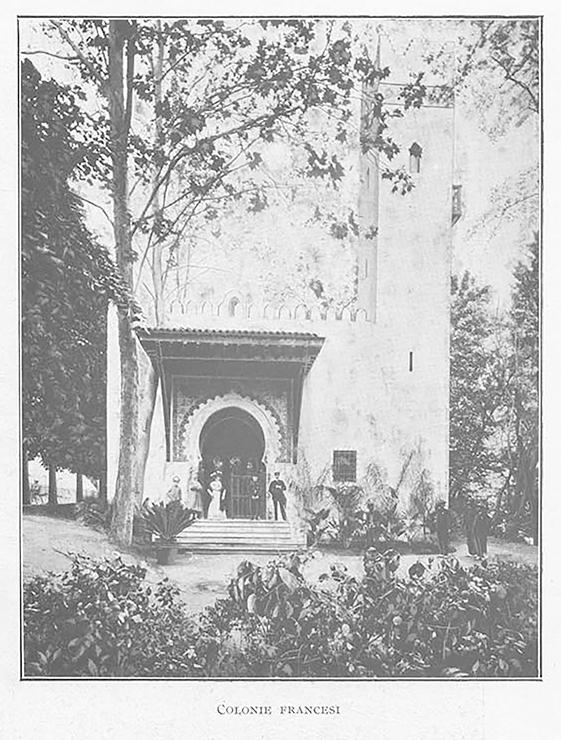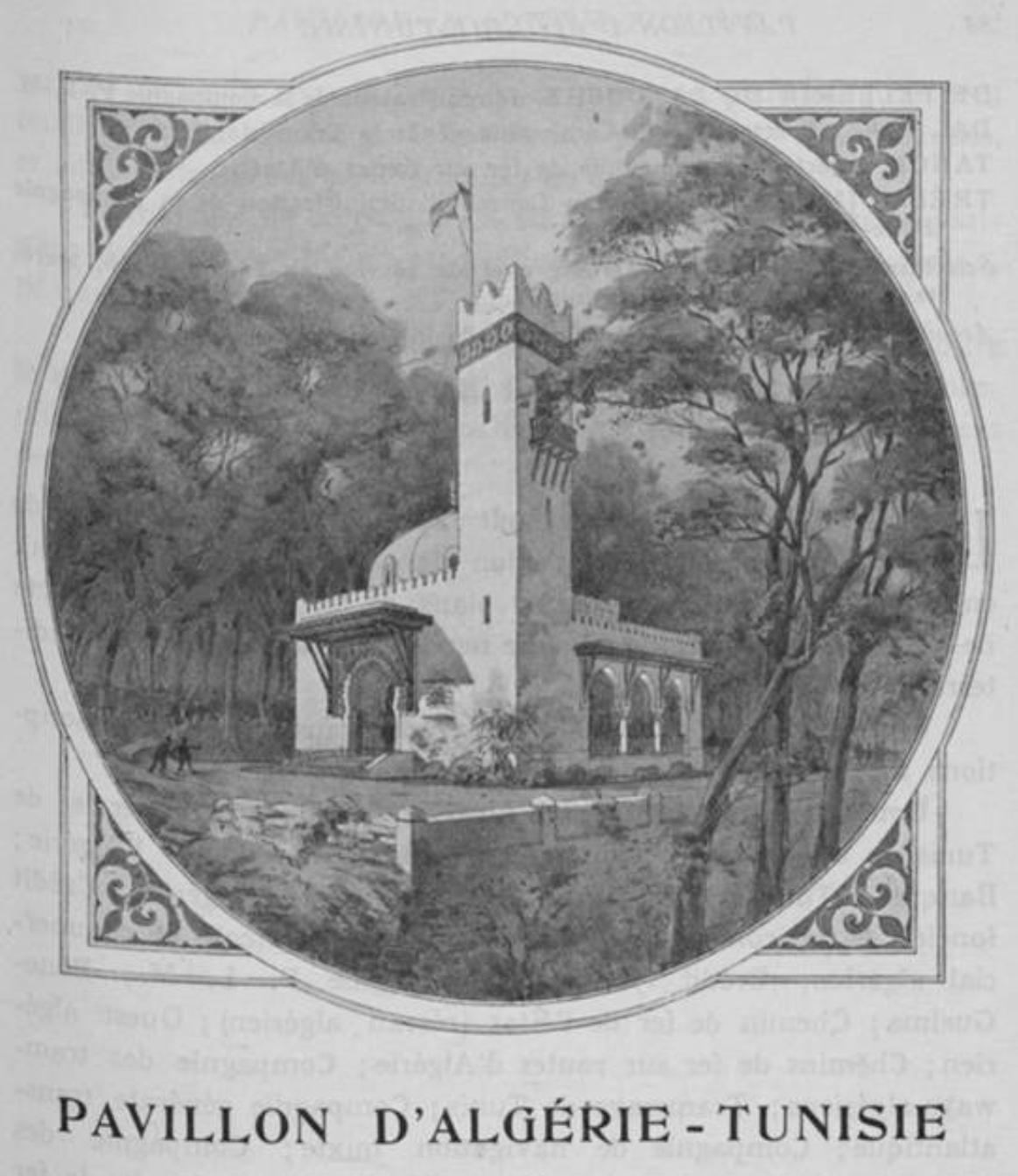Pavillon d'Algérie et Tunisie
Object/Work Type
Colonial Exhibits
Title Text
Pavillon d'Algérie et Tunisie
Alternate Title Text
Colonie francesi, Algérie, Tunisie
Creation Date
1910-1911
Styles/Periods Description
The Pavilion was built in a generic Moorish revival style, which was very popular in 19th and early 20th centuries World's Fairs. The style reflected Western fascination with the "exotic," and displayed elements of Islamic architecture, drawing inspiration from North Africa and Spain.
Styles/Periods Indexing Terms
Moorish Revival
Descriptive Note Text
The Pavillon de l'Algérie et Tunisie was located next to the Ministry of the French Colonies and was listed as number 3 in the Plan Officiel de la Section Française:
The Rapport Général de la Section Française described this small Pavillion thus:
L'Algérie et la Tunisie offraient, à quelques pas de là, dans un pavillon plein de couleur et qui sentait l'encens. le coutumier spectacle du joli bazar africain, toujours un peu le même, et où la foule revient toujours avec plaisir.• Tapis, madame? Nougat, monsieur? - Et cela, pour elle, e'est tout l'Orient! Il était charmant, ce ruban de jardin, tendu le long du fleuve, des Colonies au Restaurant français, et sur lequel s'élevait — tout près de notre Algérie - le pavillon du Commissariat de France. Encore un joli décor, et sur lequel eut pu s'inserire, er manière d'enseigne, la fin de l'hexamètre d'Horace : Miscuit utile-dulci.
Algeria and Tunisia, a few steps away, in a pavilion full of color and smelling of incense, offered the customary spectacle of the pretty African bazaar, always a little the same, and to which the crowd always returns with pleasure. • Carpet, madame? Nougat, sir? - And that, for her, is the whole Orient! It was charming, this ribbon of garden, stretched along the river, from the Colonies to the French Restaurant, and on which rose - very close to our Algeria - the pavilion of the Commissariat of France.
In describing the Pavilion, the Catalogue Spécial Officiel de la Section Française combined the exhibition of wares (furniture) and images (postcards and tourist brochures) with that of human types (the Arab from Algier, etc.) according to the conventional clichés of Orientalist discourse typical of the World's Fairs' representations of non-Western locales:
Algérie et la Tunisie sont représentées à l'Exposition de Turin par un élégant pavillon de style mauresque, construit en manière de mosquée sur les plans de M. Toudoire, architecte de la Compagnie des chemins de fer de Paris à Lyon et à la Méditerranée. Le Pavillon d'Algérie-Tunisie est affecté à la propagande touristique que justifie l'intérêt des voyages en ces contrées si originales, où se rencontrent, à chaque pas, les traces imposantes des civilisations raffinées qui s'y sont succédé au cours des siècles. On y trouve, auprès d'un agent de la Compagnie du chemin de fer P. L. M., qui reçoit les visiteurs, tous les renseignements nécessaires à ces voyages sous forme de prospectus variés. Un confortable mobilier permet au visiteur de l'Exposition de prendre un peu de repos, sous le dôme de la mosquée, pendant qu'il peut feuilleter à son aise les guides et livrets qui lui sont communiqués, et admirer les belles photographies qu'on lui présente. Le mobilier de ce pavillon a été fourni par les Magasins parisiens de la Place Clichy, et constitue leur exposition cataloguée à la classe 73-A du groupe XIII. Un Arabe d'Alger, installé sous le porche de la mosquée, offre le café au visiteur. Des chaouchs en élégant costume, un sous-officier et deux cavaliers spahis complètent harmonieusement cet ensemble" (88-89).
Algeria and Tunisia are represented at the Turin Exposition by an elegant Moorish-style pavilion, built in the style of a mosque according to the plans of Mr. Toudoire, architect of the Paris-Lyon and Mediterranean Railway Company. The Algeria-Tunisia Pavilion is dedicated to tourist propaganda, justifying the interest of traveling to these unique lands, where, at every step, one encounters the imposing traces of the refined civilizations that have succeeded one another over the centuries. There, an agent of the P. L. M. Railway Company, who receives visitors, provides all the information necessary for these trips in the form of various brochures. Comfortable furniture allows the visitor to the Exhibition to take a little rest, under the dome of the mosque, while he can leaf through the guides and booklets provided to him at his leisure, and admire the beautiful photographs presented to him. The furniture of this pavilion was provided by the Parisian Stores of Place Clichy, and constitutes their exhibition cataloged in class 73-A of group XIII. An Arab from Algiers, installed under the porch of the mosque, offers coffee to the visitor. Chaouchs in elegant costume, a non-commissioned officer and two spahi horsemen harmoniously complete this ensemble.
Code in the 1911 Map
SIM 14 (3 French Map)
Related Protagonists
General Subject Terms



